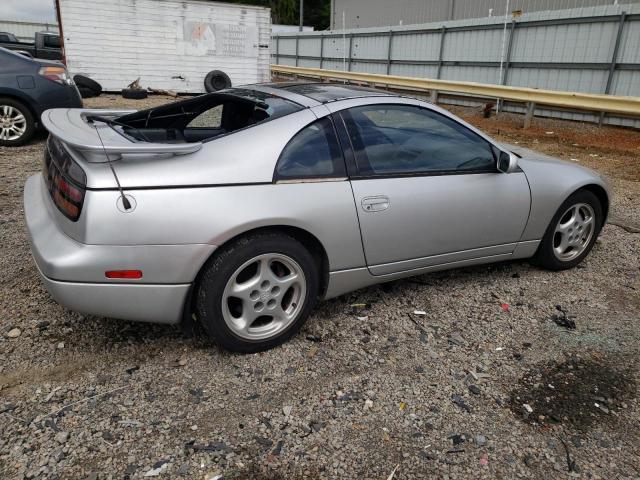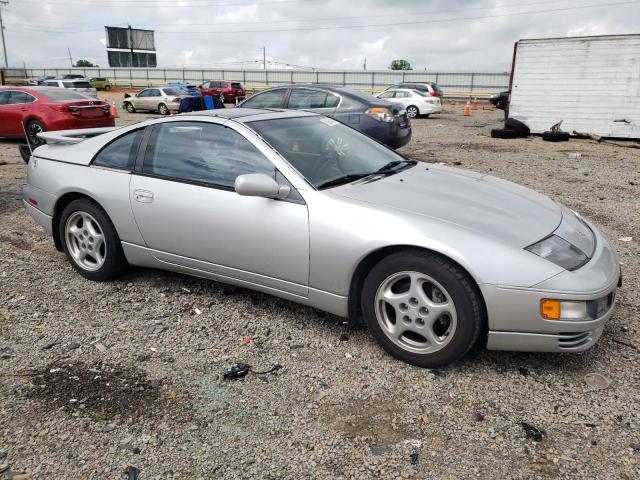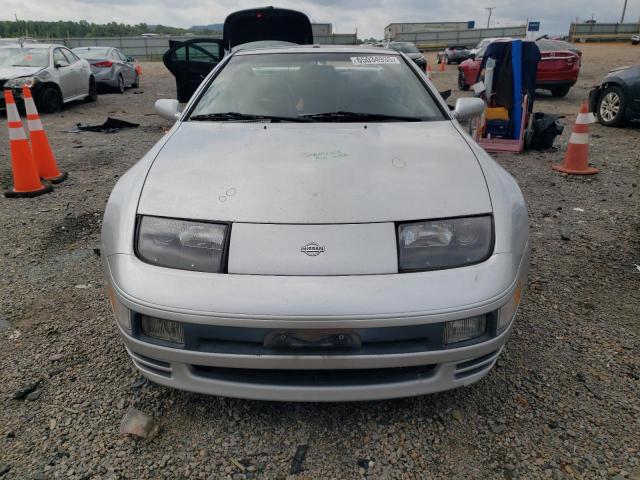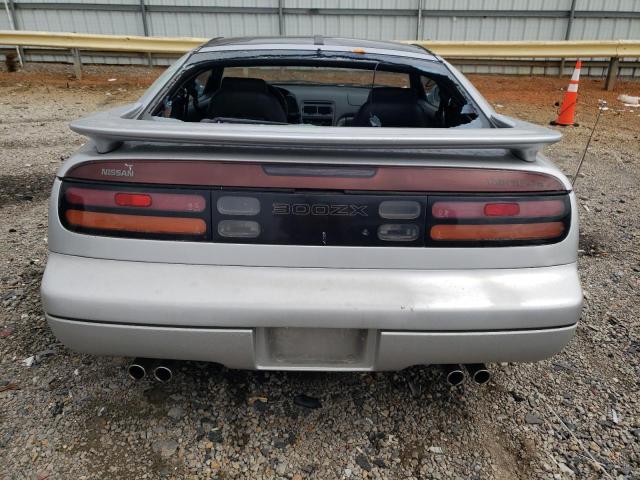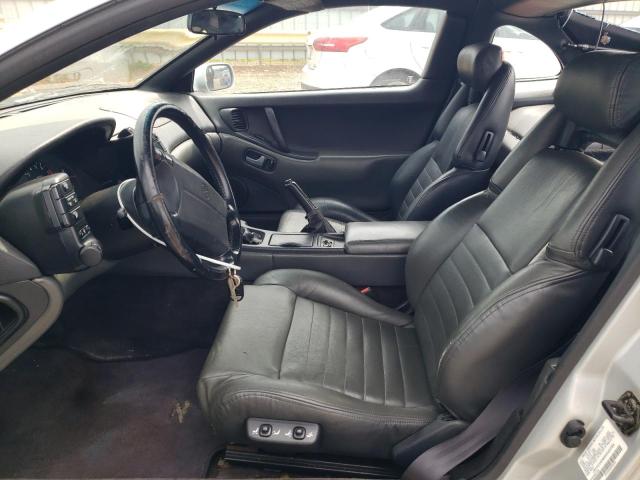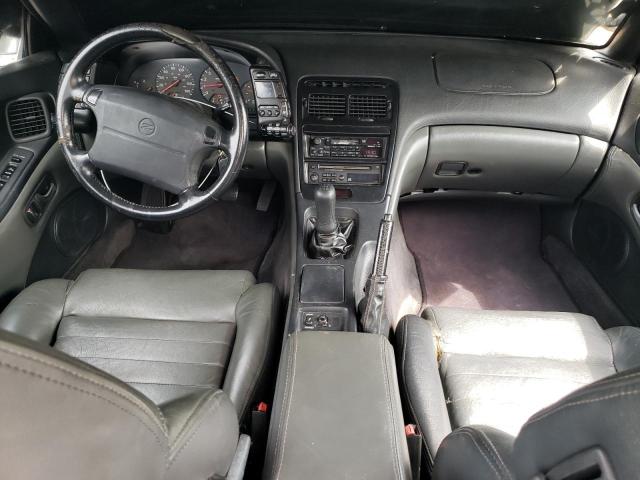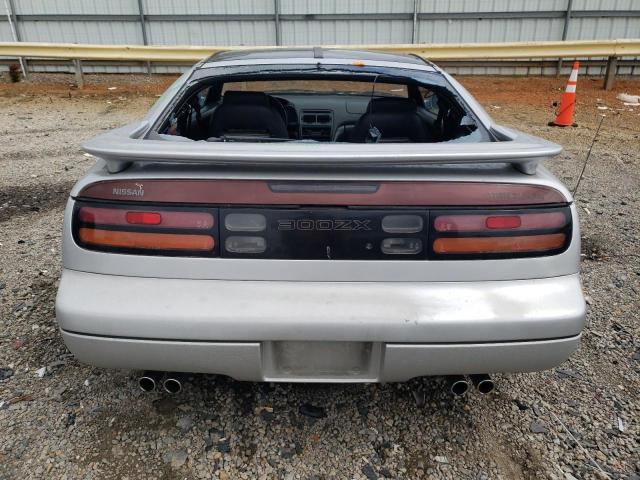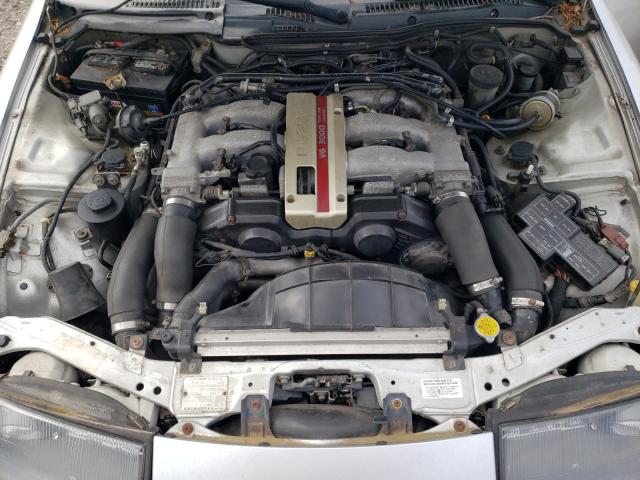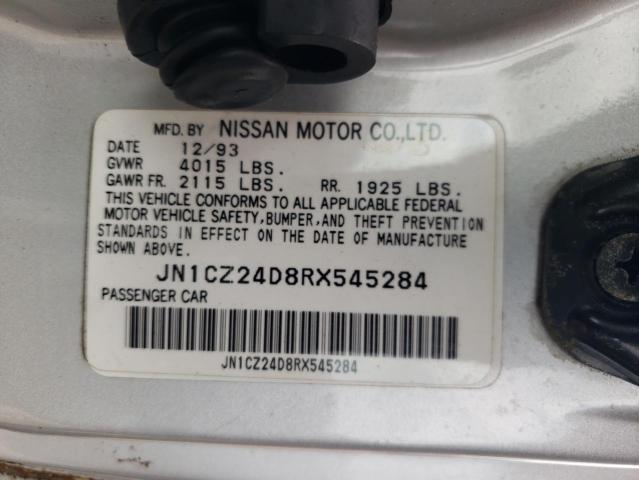1994 NISSAN 300ZX | JN1CZ24D8RX545284
 ❯
❯Lot details
- Sale Date2025-08-01
- Lot Number65034935
- ACV25000 $
- Sale documentVA - CERT OF TITLE - SALVAGE
- LocationVA - DANVILLE
- Odometer153,613 miles (247,216 km)
- Primary DamageTOP/ROOF
- Secondary DamageREAR END
Vehicle specifications
4
~$40,000
Engine: 3.0L twin-turbocharged V6 (VG30DETT)
Torque: 384 Nm
0–100 km/h: ~5.6 s
The Z32-generation 300ZX Twin Turbo was a performance revelation for its time, delivering nearly 400 Nm of torque and a sub-6-second sprint to 100 km/h. With sequential turbos spooling smoothly and a flat torque curve, the car was capable of both refined highway cruising and aggressive off-the-line launches. In a straight line, it kept pace with contemporary European and American rivals, surprising many with its thrust and consistency.
Beneath the dramatic bodywork sat a chassis engineered with balance in mind. Four-wheel independent multi-link suspension and optional four-wheel steering (HICAS) made the 300ZX exceptionally agile for a front-engine GT. Its low-slung stance and wide track helped maintain composure in corners, while the power-assisted rack provided clear feedback. Despite its weight, it never felt cumbersome in tight bends.
The Z32 was a bold technological leap from the 1980s 280ZX, bringing modernity, sophistication, and a global sports car attitude. It was Japan’s answer to the Porsche 944 Turbo and Corvette C4 — but with more finesse, superior build quality, and unmistakable style. It wasn't just a fast Nissan; it was a statement about what Japan could engineer when no expense was spared.
Final Bid Nissan 300ZX (1994)
$11,300
$11,300
$11,300
Body Styles
The 300ZX was available as a low-slung 2-seater coupe or a 2+2 variant with a slightly longer wheelbase and rear seats for occasional passengers. Both configurations were offered with removable T-top roof panels that emphasized its exotic character. Its proportions were clean and assertive, with wide hips, a short rear overhang, and a long, low hood that wrapped around the pop-up headlights. The sleek wedge profile gave it a near-supercar silhouette, and its tightly drawn bodylines were aerodynamically optimized without excess.
Model Name Meaning (Manufacturer)
The name "300ZX" signified the car's place in the Z-series lineage and its 3.0-liter displacement. The "Z" badge had represented Nissan’s sports car heritage since the 240Z in 1969, and the ZX suffix was used from the 280ZX onward to denote a more refined, GT-oriented approach to performance.
Body & Interior Colors and Rims
The 300ZX palette featured bold hues like Ultra Red, Sapphire Blue, Super Black, and Pearl White, alongside rarer tones such as Midnight Purple and Aztec Red. Special editions like the 25th Anniversary models featured unique paint finishes and commemorative badges. Clearcoat metallics and high-gloss blacks were particularly popular with enthusiasts and collectors.
Inside, the cabin offered black, tan, and grey upholstery, typically in leather or suede-like cloth. The dashboard wrapped around the driver with a deeply inset gauge cluster, while switchgear was focused and futuristic. Leather-wrapped steering wheels, embroidered “Z” logos on the seats, and optional digital climate controls gave the interior a blend of analog and emerging digital character.
Factory wheels ranged from 16-inch five-spoke designs to staggered 17-inch alloys on Turbo models. These featured directional fan blades or turbine-style patterns, often finished in polished silver or graphite. The stance was further enhanced by wide rear tires and a subtle wheel gap that signaled real performance potential.
Top Expensive Options
- T-top Removable Roof Panels: $1,000
- Bose Premium Audio System: $900
- Leather Seating Package: $1,200
- 4-Wheel Steering (HICAS): $1,300
- Digital Automatic Climate Control: $600
- Driver’s Airbag (from 1994 onward): $500
- Chrome-Finish Alloy Wheels: $700
- Limited-Slip Differential: $800
- Adjustable Electronic Suspension: $1,100
- Rear Spoiler & Aero Kit (Dealer Option): $1,000
vs Competitors
The 300ZX Twin Turbo slotted directly against the Toyota Supra Turbo, Mitsubishi 3000GT VR-4, and Mazda RX-7 FD, forming the core of Japan’s sports car golden era. Among them, the 300ZX stood out for its blend of brute power, technological sophistication, and everyday usability. It lacked the all-wheel drive complexity of the VR-4, but offered more refinement than the RX-7 and better value than European rivals like the Porsche 968 or BMW 850Ci. Its pricing undercut many performance peers while delivering equivalent thrills and a more ergonomic cockpit. In long-term reliability, the naturally aspirated Zs earned a reputation for bulletproof engineering, while the turbo models, though more demanding, rewarded precise maintenance with world-class performance.
Fun Fact
The 300ZX Twin Turbo was one of the few Japanese sports cars of the 1990s officially sold in the U.S. with a true 155 mph (250 km/h) top speed, despite Japan’s gentlemen’s agreement on horsepower caps. It also served as a pace car for the 1991 Indianapolis 500 — one of the few Japanese cars ever given the honor.




